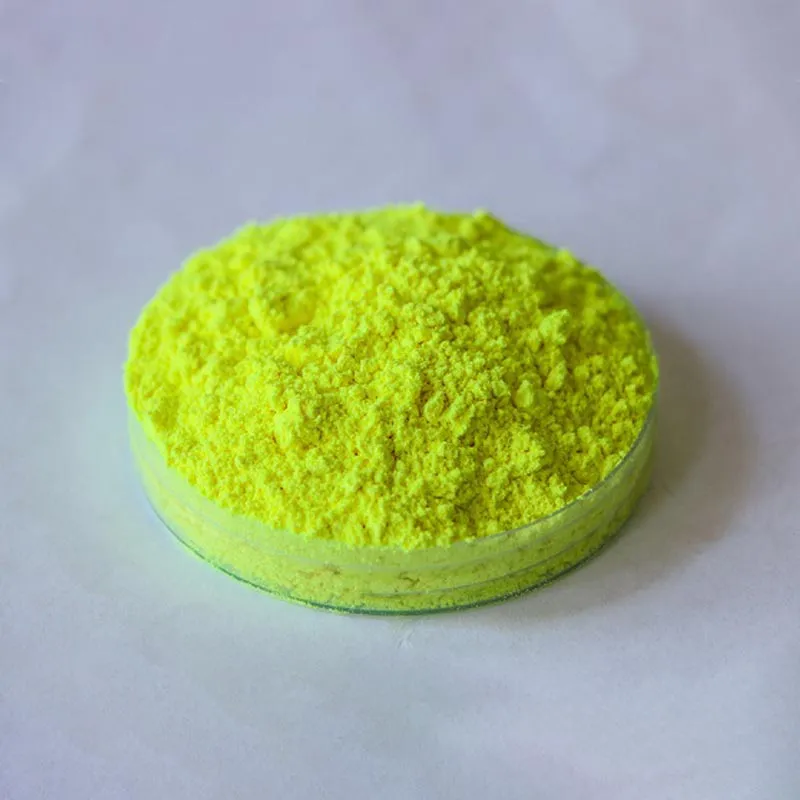What are the classification of optical brighteners?
2024-11-07
Optical brighteners, also known as fluorescent whitening agents (FWAs) or optical brightening agents (OBAs), are compounds that absorb ultraviolet (UV) light and emit it as visible blue light. This emission compensates for yellowish tones, making materials appear brighter or whiter. These agents are commonly used in detergents, textiles, papers, and plastics. Here are the classifications of optical brighteners based on their chemical structure and applications:
1. Classification Based on Chemical Structure
- Stilbene Derivatives: The most widely used class of optical brighteners. Stilbene-based brighteners have good solubility and are commonly used in detergents, paper, and textiles.
- Example: Stilbene triazine, stilbene biphenyl, and bis(triazinyl)aminostilbene.
- Coumarin Derivatives: Known for their strong fluorescence, they are mainly used for brightening synthetic fibers such as nylon, acetate, and plastics.
- Example: Coumarin 6 and coumarin 7.
- Benzoxazole Derivatives: These brighteners offer good lightfastness and thermal stability, making them ideal for plastics, coatings, and textile applications.
- Example: Benzoxazole sulfonic acids.
- Benzimidazole Derivatives: Effective on polyester and synthetic fibers, benzimidazole brighteners are known for their stability and resistance to heat and light.
- Example: Benzimidazole sulfonic acid.
- Pyrazoline Derivatives: These are less common but are used for specialty applications requiring high fluorescence. They are known for producing a brightening effect in polyester fibers.
- Naphthotriazolylstilbenes: Primarily used in the paper industry for high-performance brightening, they provide enhanced brightness under UV light.
- Other Miscellaneous Compounds: These include brighteners based on various chemical families such as imidazole, cyanuric chloride, and triazine-stilbene derivatives. They are often customized for specific industrial needs.

2. Classification Based on Application
- Laundry Detergents: Optical brighteners used in detergents are designed to deposit onto fabrics during washing, compensating for yellowing over time and enhancing fabric brightness.
- Common types: Stilbene derivatives (e.g., Tinopal CBS-X).
- Textiles and Fabrics: Brighteners for textile applications are chosen based on fiber type, such as cotton, polyester, or nylon, to improve the visual brightness and whiteness of the material.
- Common types: Stilbene, benzoxazole, and benzimidazole derivatives.
- Paper and Pulp Industry: Optical brighteners are added to paper to increase whiteness and improve contrast, making text and images appear sharper.
- Common types: Naphthotriazolylstilbene and stilbene derivatives.
- Plastics and Polymers: Optical brighteners for plastics must withstand high temperatures during the manufacturing process. They improve the appearance of products made from polymers like PVC, PE, and PP.
- Common types: Benzoxazole and benzoxazolyl derivatives.
- Cosmetics and Personal Care: In cosmetic products, optical brighteners add a brightening effect to skin and hair products, creating a visual illusion of smoothness and reducing yellowish undertones.
- Common types: Coumarin derivatives.
- Inks, Coatings, and Paints: Optical brighteners are also added to inks and coatings to enhance the brightness and appearance of printed materials and painted surfaces.
- Common types: Stilbene and benzoxazole derivatives.
3. Classification Based on Solubility and Use Environment
- Water-Soluble Optical Brighteners: These are used where the application requires dissolving the brightener in water, such as in detergents and water-based textile treatments.
- Solvent-Soluble Optical Brighteners: Used for non-aqueous systems, such as in plastics, coatings, and inks, where a solvent medium is required.
4. Classification Based on Performance Characteristics
- High-Thermostability Brighteners: Designed for high-temperature processes, especially in plastics and synthetic fibers manufacturing, where standard brighteners might degrade.
- Lightfast Optical Brighteners: Used where long-term exposure to light is expected, such as in outdoor applications, to ensure the brightening effect lasts over time.
Summary
Optical brighteners are classified based on their chemical structures (e.g., stilbene, coumarin, benzimidazole derivatives), application areas (detergents, textiles, paper, plastics), solubility (water or solvent), and performance characteristics (thermostability, lightfastness). The choice of brightener depends on the specific properties needed for an application, such as durability, brightness level, and compatibility with materials.


